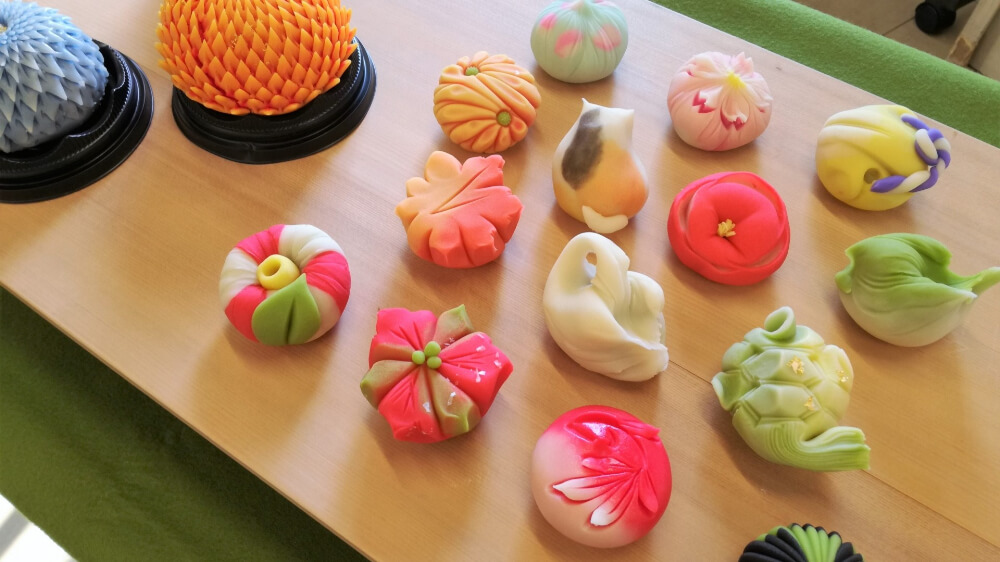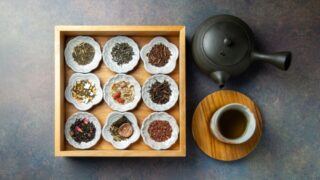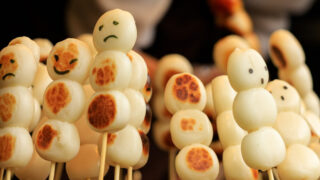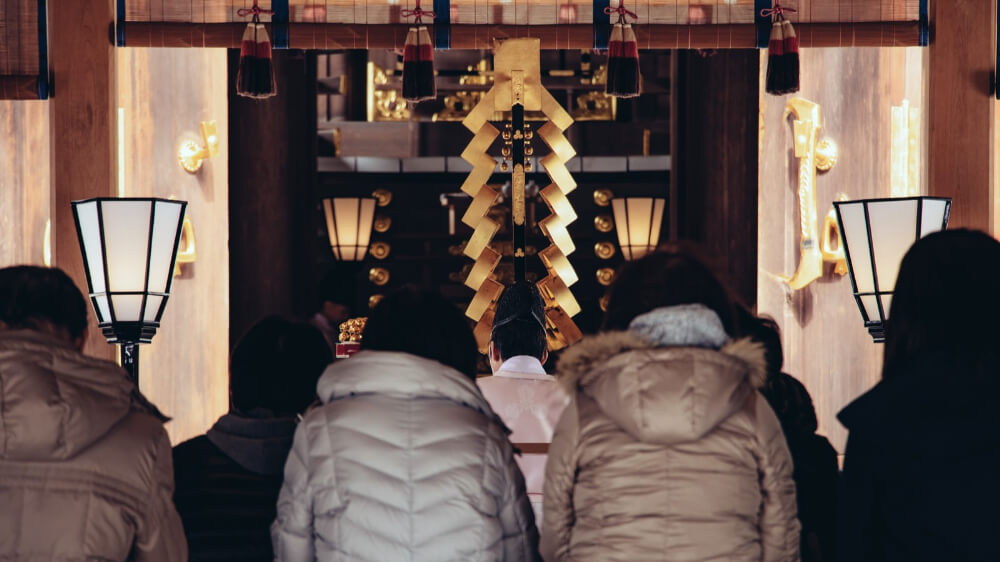Japanese traditional sweets, known as wagashi, are like fine pieces of art. These sweets often reflect the beauty of Japan’s seasons and culture. This article introduces some of Japan’s most iconic wagashi and how to enjoy them.
What is Wagashi?
Wagashi are traditional Japanese sweets that reflect Japan’s scenic beauty and the aesthetic sensibilities of its people. With centuries of history, these sweets were originally offered to the gods as sacred treats.
Most wagashi are made from simple ingredients like sugar, rice, and anko (sweetened red bean paste). Unlike Western sweets, which often emphasise rich flavours from butter and cream, wagashi focuses on textures and delicate sweetness. Often crafted to mirror seasonal themes or scenes from nature, wagashi are as much a treat for the eyes as they are for the taste buds.
In recent years, sweets made with Japanese ingredients like matcha, roasted soybean flour (kinako), and black sesame have gained popularity. Modern takes on wagashi, like matcha lattes, are enjoyed worldwide, blending traditional Japanese elements with Western dessert flavours.
It is common to enjoy wagashi with tea. Japan offers a variety of teas beyond the globally popular green tea, many of which pair excellently with wagashi. During your trip to Japan, be sure to visit traditional Japanese-style cafes and enjoy the harmony of tea and wagashi!
Must-try Traditional Japanese Sweets
Senbei
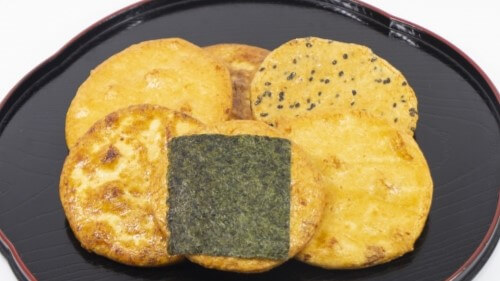
Senbei is a classic Japanese snack made from rice, flattened into a thin shape, and then grilled to a crisp. Known for its simple yet satisfying crunch and rich rice flavour, senbei has been a popular everyday snack in Japan for generations.
Senbei comes in many varieties, including classic soy sauce and salted varieties, as well as options like sesame and shrimp senbei. You can easily find it in supermarkets and convenience stores as well as tourist spots.
Dango

Dango are small, chewy rice dumplings on a skewer. Popular types include mitarashi dango, which is coated with a sweet soy glaze, and anko dango, topped with sweet red bean paste. Seasonal and regional varieties, like three coloured dango enjoyed at cherry blossom viewings, or tea flavoured dango are also available. Colourful dango lined up at festivals and tourist spots is a classic symbol of Japan’s seasonal charm.
Nerikiri

Nerikiri is a beautiful and delicate Japanese sweet made from sweetened white bean paste and chewy rice flour dough. It’s often shaped into seasonal designs, like flowers or fruits, and is known for its smooth texture and refined sweetness. This traditional treat is commonly served at tea ceremonies, where its elegant appearance adds to the experience. Nerikiri is a perfect example of the artistry and tradition of Japanese sweets.
Yokan
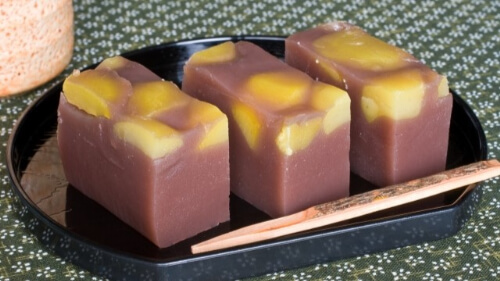
Yokan is a dense, jelly-like sweet made from sweetened red bean paste and thickened with agar, offering a moist yet firm texture. It’s typically shaped into a long block and is often sliced into small pieces for serving. With a rich history, yokan is commonly enjoyed with tea during tea ceremonies. In the summer, a variation called mizu yokan, which has a higher water content, becomes popular for its cool, smooth texture—making it the perfect refreshment for hot days.
Taiyaki
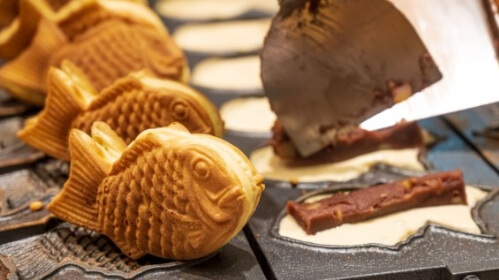
Taiyaki is a fish-shaped pastry made with a crispy outer layer, filled with sweet red bean paste. Often served hot, this treat is popular at festivals and street stalls as a quick and delicious snack. Traditionally, taiyaki is available with either smooth koshi-an (strained bean paste) or chunky tsubu-an (bean paste with whole beans), but newer versions include fillings like custard and chocolate, adding a modern twist.
Daifuku
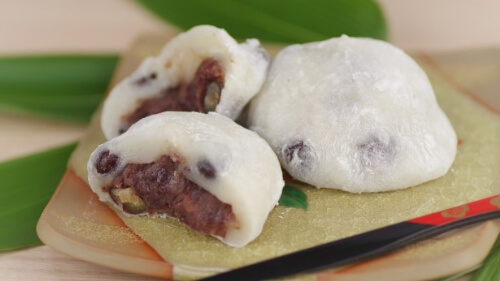
Daifuku is a traditional Japanese sweet, filled with sweet red bean paste, and covered by a chewy rice cake. With seasonal flavours like cherry blossom, strawberry, large adzuki beans, and chestnut, this treat is both a feast for the eyes and taste buds. A staple in Japanese sweets shops, daifuku is also widely available at convenience stores.
Castella
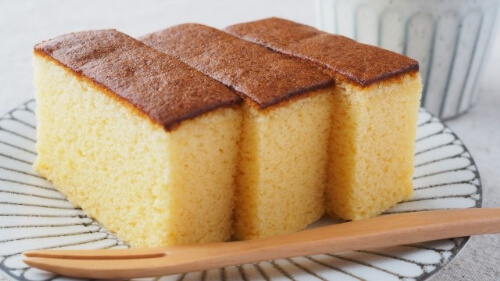
Castella is a fluffy, moist sponge cake introduced by Portuguese traders, now a beloved Nagasaki speciality. This sweet cake offers a gentle egg and sugar flavour, combining the best of Japanese and Western dessert traditions.
Sakura Mochi
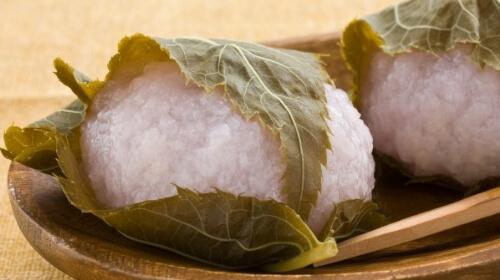
Sakura mochi, a springtime treat, is a pink rice cake filled with sweet red bean paste and wrapped in a salted cherry blossom leaf. The leaf’s mild saltiness enhances the sweetness of the filling, creating a perfect balance of flavours. While the leaf is edible, people usually remove it. Available in spring, sakura mochi can be found in Japanese sweet shops, supermarkets, and even convenience stores.
Monaka
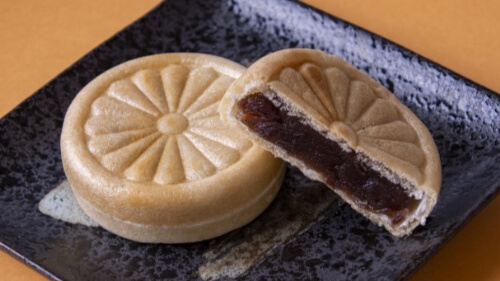
Monaka is a delicate wafer filled with sweet red bean paste, often moulded into shapes like flowers, animals, or castles for extra appeal. The crisp, toasted wafer is also served with various modern desserts like ice cream or tart sweets.
Warabi Mochi
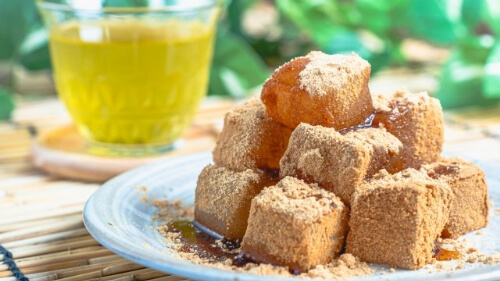
Warabi mochi is a jelly-like treat made with bracken starch, known for its refreshing, bouncy texture. A beloved speciality of Kyoto and Nara, it is served cold with black sugar syrup and kinako (roasted soybean flour). This delightful dessert is especially popular during the summer months.
Dorayaki
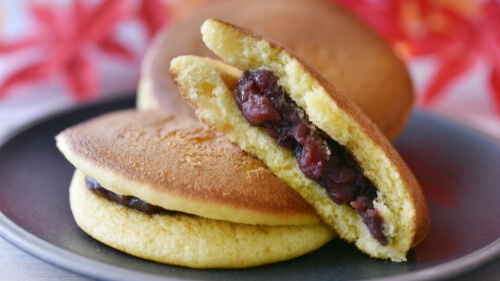
Dorayaki is a traditional dessert made of sweet red bean paste sandwiched between two fluffy pancakes. Like taiyaki, it’s traditionally filled with koshi-an or tsubu-an, though various flavours now exist. Dorayaki is a popular afternoon snack in Japanese homes and pairs perfectly with tea.
Kashiwa Mochi
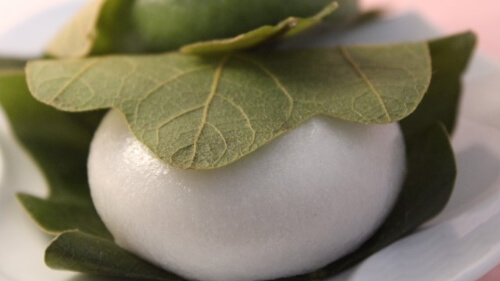
Kashiwa mochi, wrapped in oak leaves, is a traditional sweet enjoyed on Children’s Day (May 5), to wish for family health. Similar to sakura mochi, but made with a white rice cake, it’s a seasonal treat often found in spring.
Anmitsu
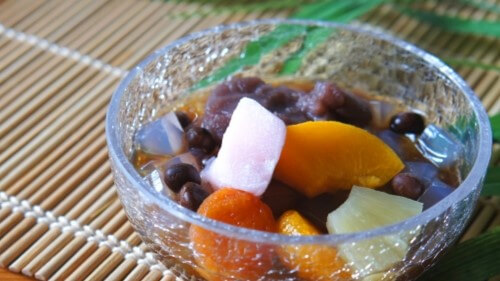
Anmitsu is a traditional Japanese dessert made with agar jelly, fruit, red beans, and sweet syrup, often served in a bowl or glass. The smooth texture of the jelly, the rich sweetness of the syrup, and the refreshing fruit make anmitsu a delightful choice. It is known as Tokyo’s speciality, commonly served in Japanese-style cafes.
Kuri Kinton
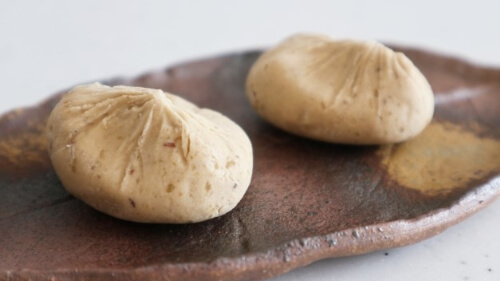
Kuri kinton is a delicacy made from mashed chestnuts sweetened and reshaped like chestnuts. You can enjoy the sweetness, rich aroma, and smooth texture of the chestnuts. It’s a speciality of Gifu Prefecture and is only available fresh during autumn when chestnuts are in season.
Kintsuba
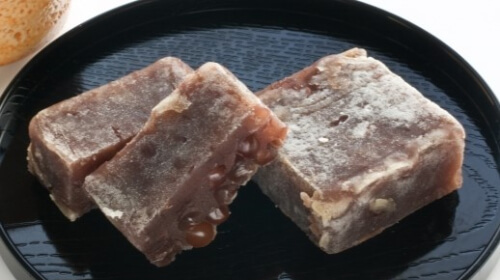
Kintsuba is a square-shaped sweet made with red bean paste and agar, coated in flour and lightly grilled. Its firm texture and the aroma of roughly mashed beans are its distinctive features, offering a simple and gentle taste. It can be found in traditional areas such as Asakusa, Kyoto, and Kanazawa.
Rakugan and Wasanbon
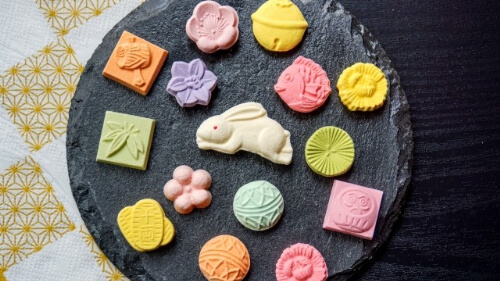
Rakugan are delicate sweets made from sugar and rice or soybean flour, melting effortlessly in the mouth. Moulded into shapes like flowers, animals, and seasonal motifs, they are enjoyed at tea ceremonies and celebrations. Wasanbon, a similar treat, is made entirely from a fine sugar called wasanbon, offering a more refined sweetness.
Karinto
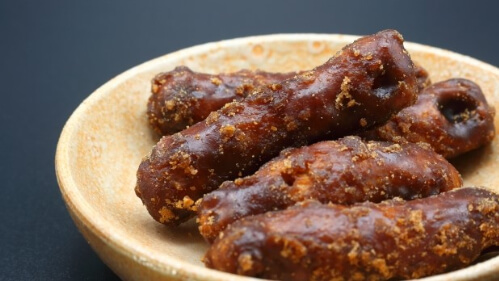
Karinto is a crunchy, traditional snack made by mixing flour and sugar, shaping them into sticks, frying them, and coating them with sweet syrup. Variants include flavours such as brown sugar, kinako, and sesame. Karinto has been a beloved snack since the Edo period, enjoyed by both adults and children and remains popular in Japan today.
Unique Ways to Enjoy Wagashi
Tea Ceremony
In historic cities like Kyoto, the “Tea Ceremony” is a popular cultural activity for tourists. During a tea ceremony, wagashi are often served alongside tea. This is a wonderful opportunity to enjoy Japanese sweets in a refined setting and experience traditional Japanese culture.
Wagashi-Making Classes
Why not try making wagashi yourself, rather than just enjoying them? In traditional tourist spots, you can find cooking classes where artisans teach you how to make them in English. It’s a unique experience that enhances your understanding and appreciation of these sweets and their cultural significance.
Japanese sweets, or wagashi, are an integral part of Japan’s traditional culture, providing a delightful experience for both the eyes and the palate. When you visit Japan, be sure to find your favourite wagashi while immersing yourself in the history and culture of Japan.
